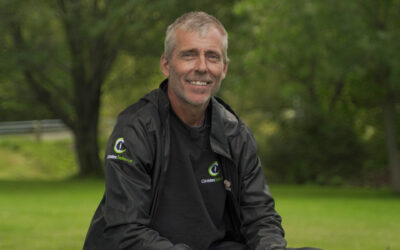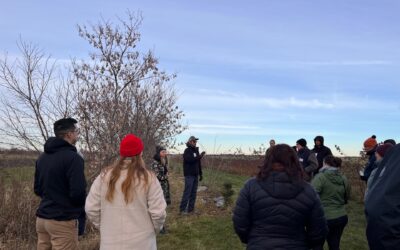Like most farmers, Kevin Ziola wants to be a good steward of the land — but it’s been tough for this third-generation farmer to balance his conservation efforts with his bottom line.
“As a cattle farmer, I believe it’s important to work with nature, not against it,” said Ziola, who runs 200 head of cattle on 10 quarters near Sylvan Lake with wife Roxanne.
“But we don’t make lots of money, so it’s hard to put away a little extra cash for (conservation). It wouldn’t be that high on the list because machinery, cattle, and feed take priority.”
But thanks to a national program called ALUS (pronounced ‘Alice’ and short for Alternative Land Use Services), farmers like the Ziolas can now get paid to retain or reconstruct natural areas such as wetlands, grasslands, and riparian areas.
Conceived a decade ago by Keystone Agricultural Producers, Manitoba’s main farm group, the program spread east to Ontario and P.E.I. and arrived in the County of Vermilion River in 2010. Funding comes from a variety of sources — governments, foundations, angler and hunter associations, and environmental groups.
“We recognize the value of that land that they’ve taking out of production, and we pay them an annual payment for the ecological goods and services they provide,” said Denika Piggott, regional delivery initiative co-ordinator for ALUS.
“We work with the farmer to cost share the actual establishment of the program, and then annually, the farmer gets a payment to support the ecosystem services that they’re providing.”
The payment structure varies from county to county, which is what makes the project “so adaptable across Canada,” said Piggott.
“A community can come in and say, ‘What makes the best sense for our farmers?’” she said.
In some cases, the payment is based on a fixed rate per acre, while other municipalities base the payment on current land values in the area. And some communities are being “innovative” and paying producers based on the “net benefit they can prove through an assessment.”
Through a cost-sharing agreement with ALUS, producers are able to complete projects such as riparian fencing, wetland restoration, shelterbelt creation, tree planting, erosion control, native prairie grass establishment — the list is “endless.”
“Farmers make the decisions of how their land is being managed in a sustainable way,” said Piggott.
“We also work with farmers, in that if they have a unique thing that they think would benefit the environment, we see if it’s a good fit for ALUS.”
Catching on
ALUS has expanded to four more Alberta counties — Parkland, Red Deer, Lac Ste. Anne, and Mountain View — with three more coming on board shortly.
“It’s a new program, but now there’s some actual evidence that it works,” said Piggott. “A lot of counties have been sitting by and watching carefully how other counties have run the program.”
Now, counties are “willing to take that risk” because they’ve seen the benefits.
“There’s been some great success in those counties and recognition nationally and provincially for the counties that run the program,” said Piggott.
A prime example is Red Deer County, which joined the program in 2013 with five projects. This year, the number jumped to 25.
“I’ve been doing this kind of stuff in Alberta now since 2001, and over that entire time, farmers and ranchers have been saying, ‘If we had a different market signal for these kinds of lands, we would be better able to manage them in a way that’s good for the environment and good for society,’” said Ken Lewis, conservation co-ordinator with Red Deer County.
“Finally, with the ALUS program, we have an on-the-ground program where farmers are getting paid for ecosystem services.”
ALUS gives producers another way to generate income from their marginal farmland, said Lewis.
“Your choice every year when you look at that wetland in the corner of your field is to farm around it or farm through it,” he said. “Now we can send them a different market signal for some of their land. They can grow ecosystem services and get paid for those, instead of more traditional crops or animals that they’re producing.”
And there’s really no downside for participating in the program, said Piggott.
“We recognize that being an agricultural producer is not an easy job,” she said. “In some cases, land changes and becomes a different function from year to year. The program is so adaptable that, in those cases, farmers can choose to opt out if they need to farm that land.
“There’s no drawbacks because you can just opt out when you need to.”
On-farm success
The Ziolas applied to the ALUS program last spring when they realized they needed to manage their cattle’s access to Tindastoll Creek, which runs through most of the couple’s pasture land.
“People I talked to told me I had to put a fence along the creek. I thought, ‘Holy smokes, that’s a major project,’” said Ziola.
After chatting with Lewis about the problem, Ziola found a solution that would work well for both his operation and the county.
“The county cleaned out the creek, and I put a hot wire on both sides of it so the cows can’t get into the creek,” said Ziola.
“It’s not that huge of a project when you just do one hot wire. That keeps the cattle out but still lets the wildlife in really easily. That worked out really well.”
In the spring, the creek fills Ziola’s dugout (another ALUS project), which supplies three off-site, year-round watering systems. That system has “changed our life a lot,” said Ziola.
“I used to have to make a hole in the ice every morning, but now it’s a whole lot easier for me to have an extra cup of coffee in the morning instead of digging a hole in the ice.”
But with a price tag of about $10,000 for each of the watering systems, the Ziolas were limited in what they could do on their own.
“It’s made my life way easier, but I couldn’t have afforded it,” said Ziola. “This work wouldn’t have happened without the help of ALUS and the county.”



